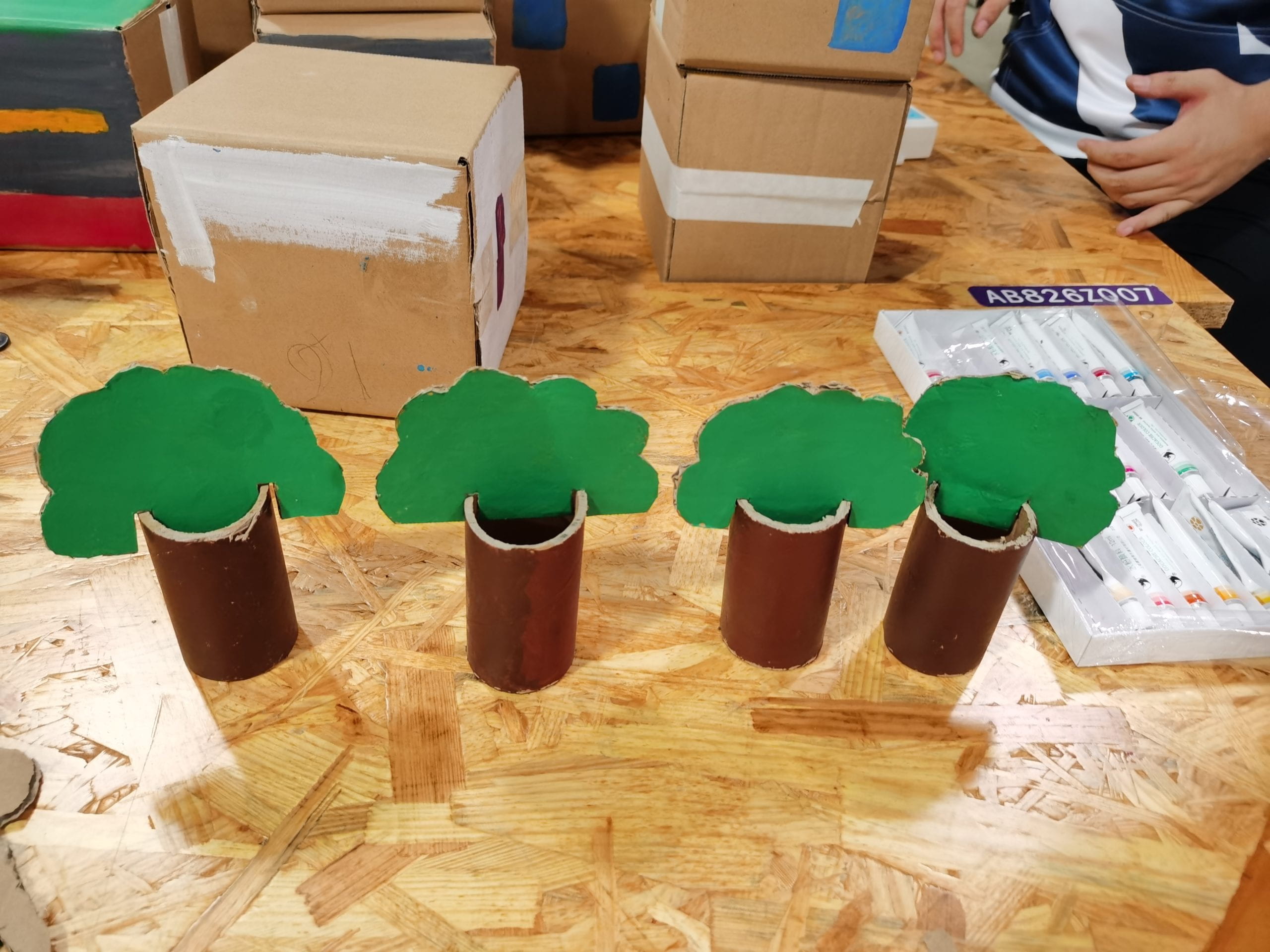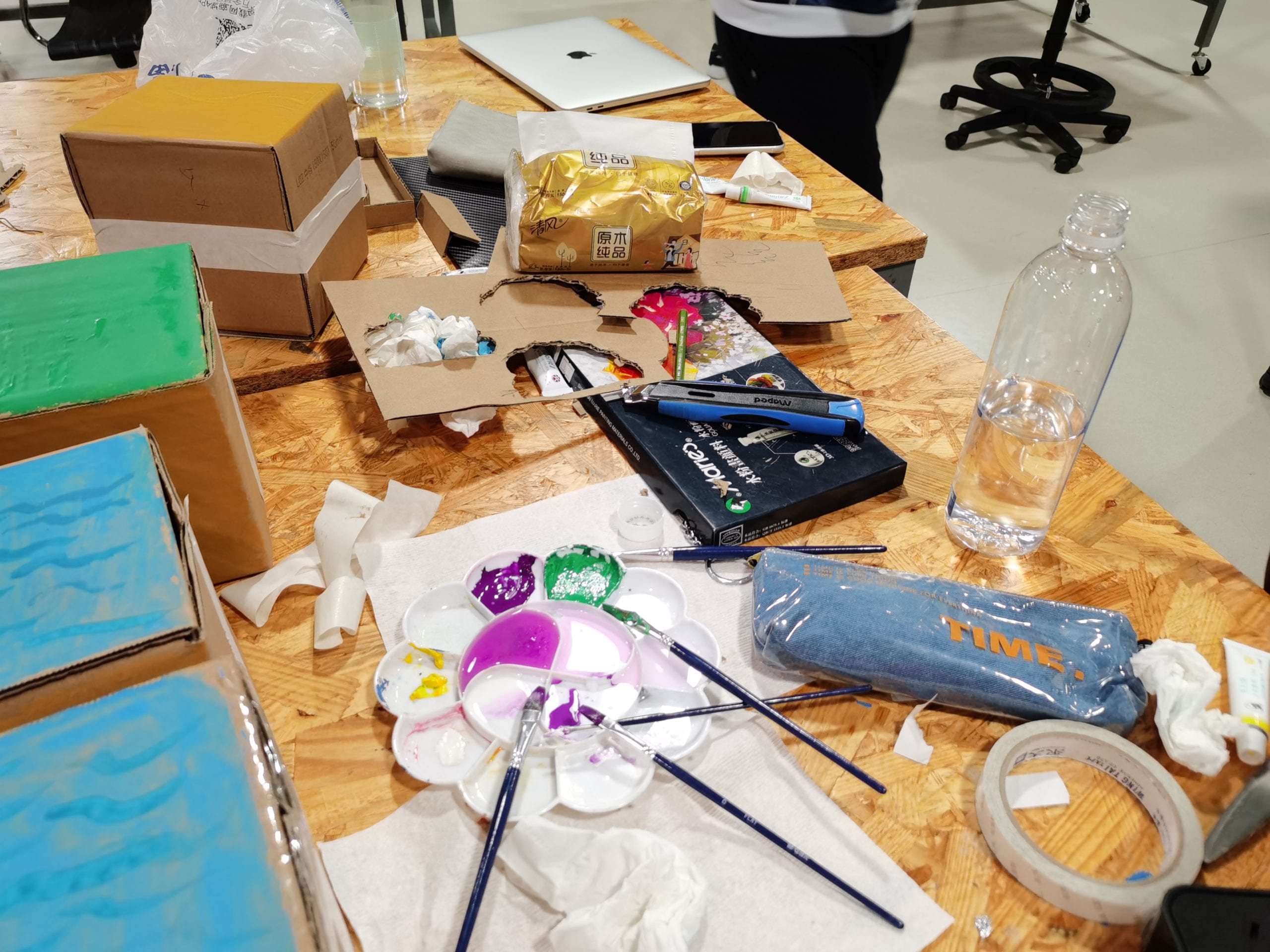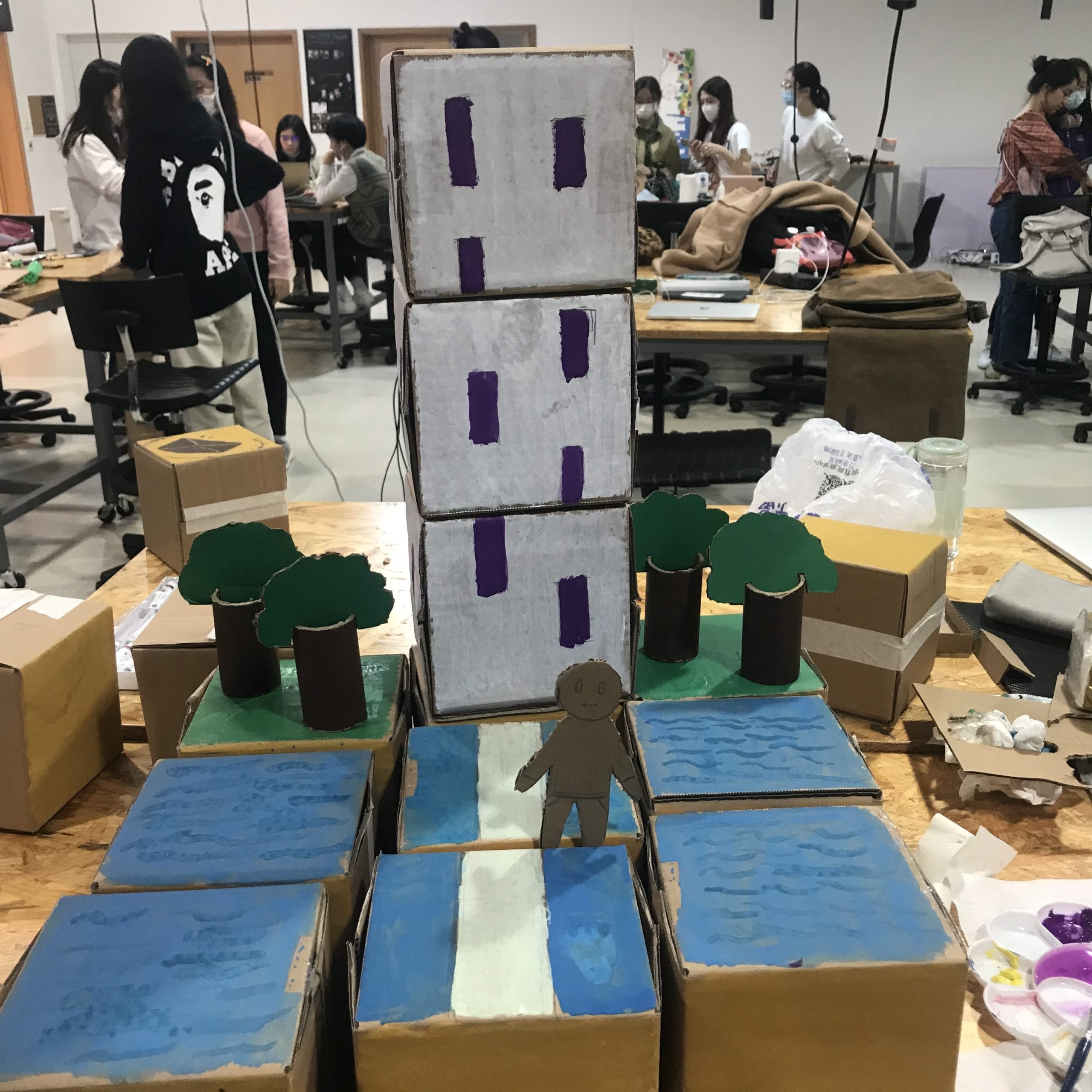Group Project Reflection
First, I am going to talk about how our group has come up with this idea of smart cubes. We met before the National Holiday, to share our design. Similarly, we have mainly focused on the story of “Folding Beijing”. Among all the ideas, there are 2 most practical designs, one is something like a time-traveling machine and another is the “smart cube”.For both designs, we want to respond to Hao Jingfang’s story’s background, which is the folding city itself. For the time machine, we want to figure out a way to transport people from one class to another and meanwhile maintain their body in the class where they should be. For the smart cube, instead of folding mechanically, we want to make the process of folding more naturally. Because we need to come up with a 5-minute performance, the second design, the smart cube, is more practical than the first one. We agree on that because the story of the time machine is more complicated and the device we are going to build may not be the main role in our performance. In that way, we don’t think the audience can get our point and know the design completely. While for the smart cube, we have lots of measures to display it with clarity to the audience. We have decided to use cardboards to make 16 cubes to be a simplified example of the imaginary folding city consists of millions of cubes. To show the 2 main features of the cube, the first is its capability to distinguish people’s voice with one another and recognize their command level and the second is to change from one material to another freely, without being troubled by its cube shape, we decide to display it through someone traveling from one class to other classes. To represent the core of the smart cube, we decide to make one in human shape. This is also helpful when we perform it. All we need to do is to let one play the role of it and he will be the clue leading us from one world to another. The second decision we made is to use 3 sides of the cardboard-made cube to represent 3 different worlds. Similar to the world in the original text of “Folding Beijing”, we design the first scene as the 3rd world and it is full of dust, people living there have the lowest command level. The second world’s residents are those who work from 9 to 5 and enjoy a limited degree of freedom both from an economic perspective and time management. The third world’s resident is people with political influence and their “servants” to beautify the environment or to make their life more colorful. As a result, the scene displayed in these 3 worlds are very different from each other and this can embody the smart cube’s feature of changing into other materials freely.
After we have made these general decisions, we began the making process during the National Holiday. The main process includes cube-making, coloring, and writing scripts. These are the pictures taken while we are preparing for it.




And here is a short video recording that we are trying to switch from the third world to the second.
In my opinion, I find our artifact very successful. It well embodies two features of the smart cube. The storyline is simple and is very helpful for the audience to understand why we switch from one scene to another.
But, I think we still can improve this artifact by accomplishing the following things. First, the third scene is a 2-dimensional world and this may arouse some misunderstandings from the audience. If we have time, I want to make the 3*3*3 construction, similar to the magic cube. By playing it, we could have 6 scenes and this is more convincing for the audience.
The second thing is about the plot. Though the time limit is a concern, I originally want to design this plot more ironically. As one audience has mentioned today, equipped with so advanced technology, the social structure is a class society. It is hard to imagine the pressure of people living in the third world is bearing right now. But due to the time limit, we mainly focus on exhibiting the function of the cube itself to the audience.
Next, I want to make a critical comment on the 6th group’s performance. The project is about a super-intelligent scientist who wants to transfer her memories to a robotic body so that she might live longer than others. But the result turns out to be a tragedy, the robotic body has every memory. While it can feel nothing because of its robotic body. So it becomes very frustrating and eventually kills himself. The design of this robot which has the ability to read one’s memory is well related to this assignment. I believe it originates from “The Lifecycle of Softwares” and it goes forward, to make the robot have the ability to store one’s memory. I find this design not as useful as I originally thought. I think if we have the ability to store memories inside a robotic body, why don’t we store it in a digital world? That’s to say, maybe inside a computer, she can still have these feelings by adding different sensors to herself so that she can taste the “01” data flow. Moreover, it’s so strange to me that she only copies her memory rather than duplicating the ability to think or to imagine. A robot merely with one’s memory is nothing more than a larger version of a USB flash disk. But I have to confess that the performance is really eye-catching, making the whole design seems to be more interesting. Especially when the robot tries to drink milk and feels the papers she once wrote. The way it behaves, getting annoyed after finding itself unable to have any feelings and then overturn the milk, really has a very dramatic impact on the whole performance. And this is definitely gonna be one of the reasons that I want to write about their projects. I think the only suggestion I have is to bring one more power to the robot, which is the ability to think. If it has the ability to reflect its existence and figuring out what its creator wants to accomplish by building it, the story would be more interesting.

